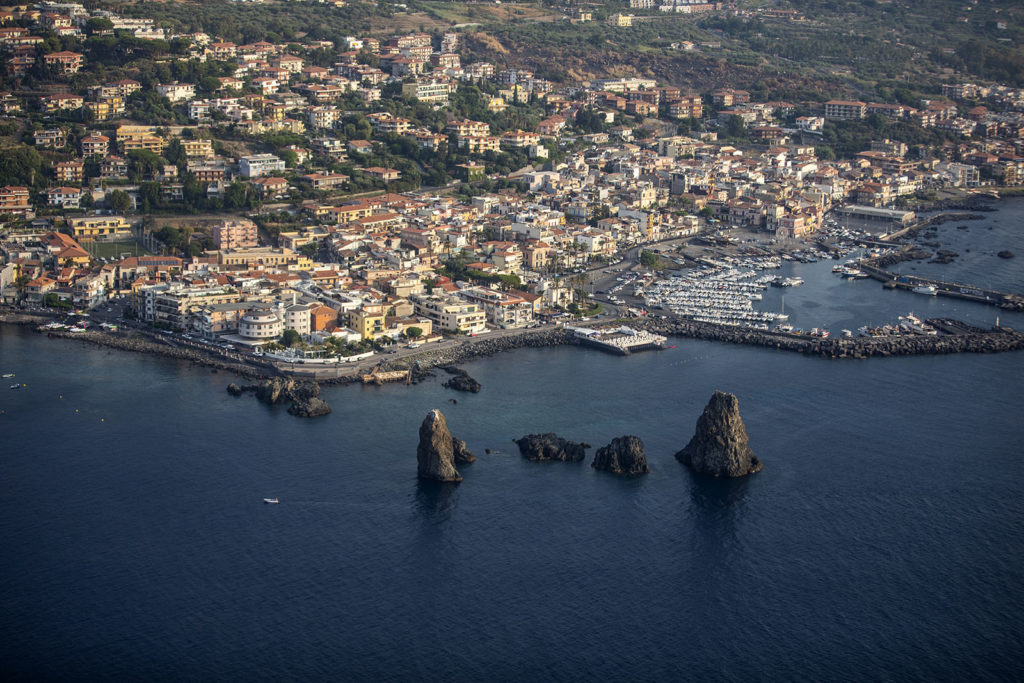The coast in front of Aci Trezza is dotted with a small “archipelago” of Stacks, called the “Archipelago of the Cyclops”. Lachea is the largest island, with an ellipsoidal shape 250 metres long and 150 metres wide and an area of just under 2 hectares. It is part of the Riserva naturale integrale Isola Lachea e faraglioni dei Ciclopi (Natural Reserve of Lachea Island and the Cyclops stacks), a protected area established by the Region of Sicily in 1998, and hosts a station for biological studies by the University of Catania. The island Lachea seems to match the description of the island inhabited only by goats found in the 9th book of Homer’s Odyssey.
Archaeological finds (a diorite axe and a tomb) were found there, showing that the island was already frequented in prehistoric times. From the Roman age, on the other hand, only objects found inside one of the island’s two large circular holes around one metre deep are left: pots, amphorae, loom weights, bone needles, fragments of a bone comb and a small oil lamp.
Like the other stacks that make up the small archipelago, the island is magmatic in origin. It might be what remains of a small magma chamber that was very superficial, known as a laccolith, dating back to around 500,000 years ago.
